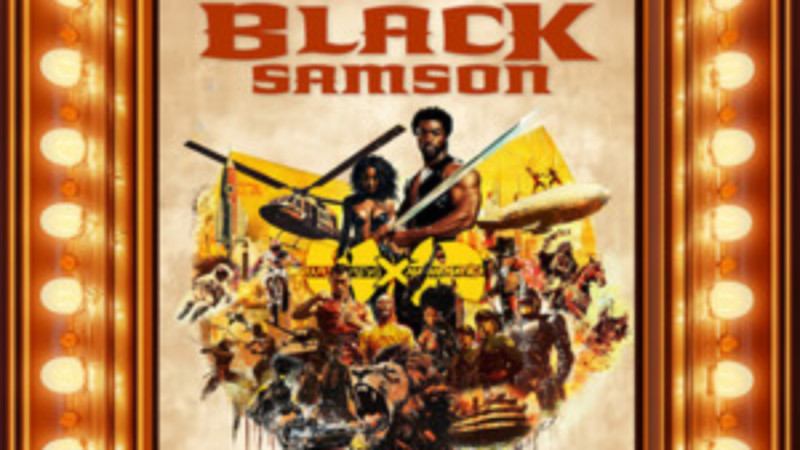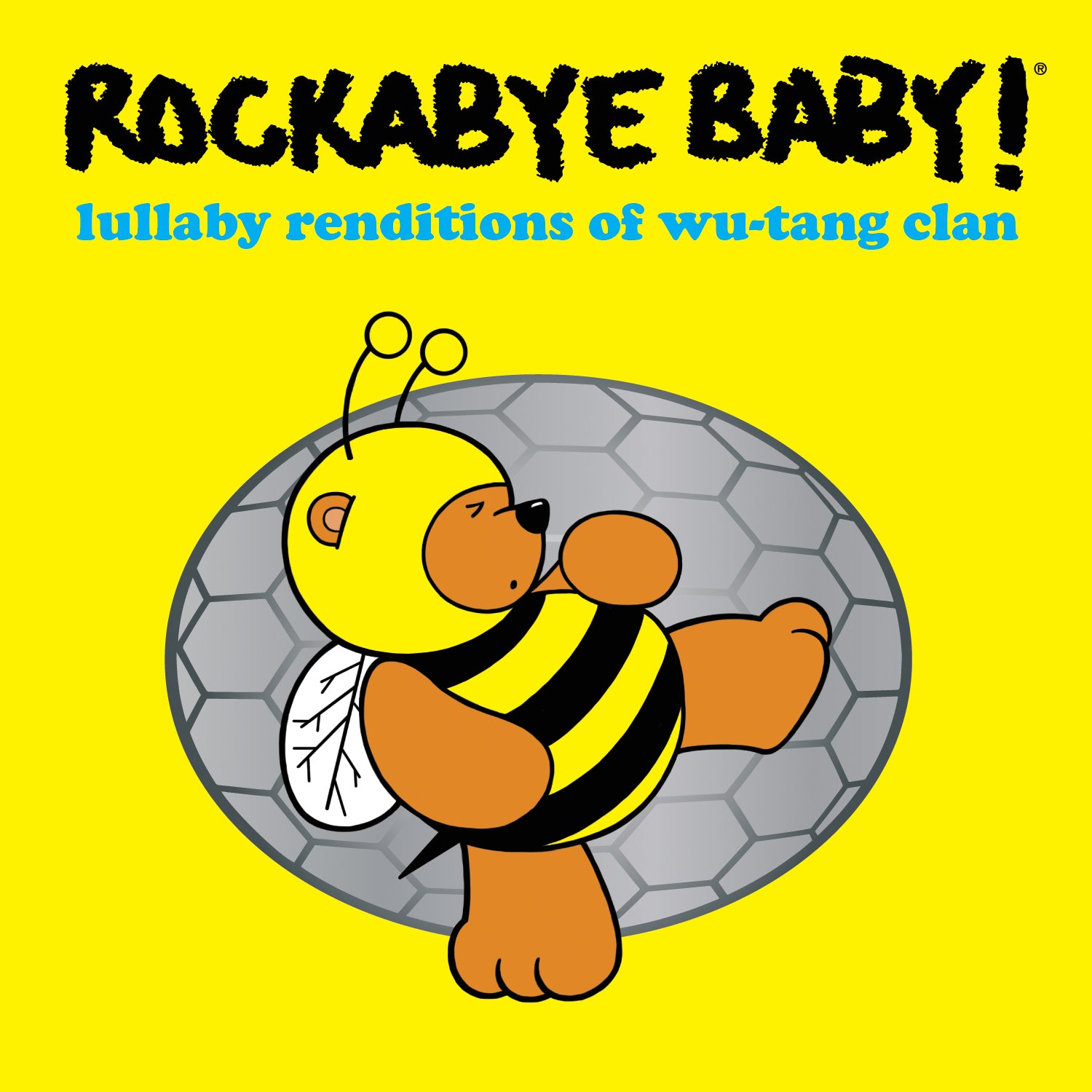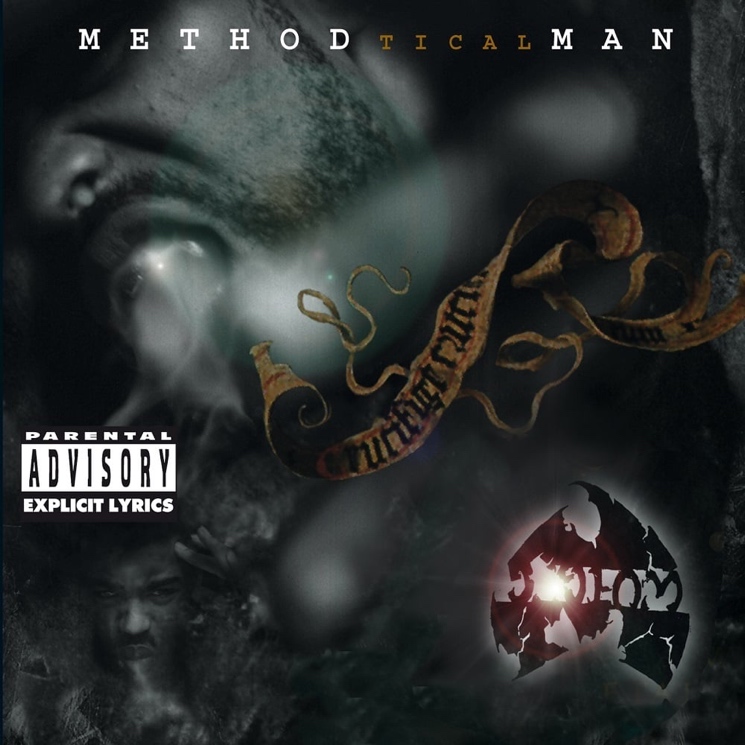Musics
Wu-Tang Clan Albums – A Deep Dive into Shaolin’s Legendary Discography
The Wu-Tang Clan, one of the most influential hip-hop groups of all time, has an extensive discography that has left an indelible mark on the genre. Their albums not only define a sound but also weave a narrative filled with cultural references, personal struggles, and social commentary. In this article, we will explore the various Wu-Tang Clan albums, considering their impact, production styles, full album guides, and much more.
Wu-Tang Clan Albums: A Ranking of Shaolin’s Finest

The Wu-Tang Clan’s discography is not merely a collection of albums; it’s a journey through hip-hop history, community, and artistry. Each album reflects the unique individual styles of its members while contributing to the collective grandeur of the group. Over the years, fans and critics alike have ranked these albums, celebrating their innovative approaches and lyrical depth.
Each Wu-Tang Clan album carries with it a cultural significance that transcends the mere collection of tracks. From the street tales of “Enter the Wu-Tang (36 Chambers)” to the introspective lyrics of later works like “A Better Tomorrow,” these albums paint a diverse picture of life, struggles, and triumphs. As we delve deeper, we will consider why certain albums frequently rise to the top of rankings, while others, although still vital, might be overlooked.
The Debut: Enter the Wu-Tang (36 Chambers)
“Enter the Wu-Tang (36 Chambers)” is undoubtedly a cornerstone in hip-hop history. Released in 1993, this debut album introduced the world to Wu-Tang’s gritty and raw sound. It redefined East Coast hip-hop and set a standard for underground rap.
The album is characterized by its:
- Distinctive production style incorporating gravelly beats.
- Innovative use of sampling, which includes sound bites from martial arts films.
- Unforgettable verses from all nine members, which allow for both group cohesion and individual brilliance.
This album not only launched the Wu-Tang Clan’s career but also set the stage for a whole new wave of hip-hop artists influenced by its raw energy and authenticity.
The Sophomore Slump or Strength?
Following such a monumental debut, there were significant expectations for a follow-up. The Wu-Tang Clan did not disappoint with “Wu-Tang Forever,” released in 1997. This iconic double album showcased their evolution, as it was more polished and commercially appealing yet fully retained their unique edge.
Key aspects of “Wu-Tang Forever” included:
- The expansion of their sound, exploring orchestral elements alongside traditional hip-hop beats.
- Lyrical maturity demonstrated by members delving deeper into their personal experiences.
- The introduction of solo projects that would further establish individual careers (notably, those of Ghostface Killah and Raekwon).
While some critics alleged that the album suffered from a bloated tracklist, its cultural impact and continued relevance proved undeniable.
The Diverse Landscape of Albums
The subsequent albums, such as “The W” and “Iron Flag,” continue to embody the evolution of the Clan. Each project sees the members exploring different themes, sounds, and collaborative possibilities. While not all albums achieved the same iconic status, they are rich with creativity and reveal the complex layers of the Wu-Tang narrative.
- “The W” (2000) was a return to form and includes notable tracks like “Gravel Pit” and “Protect Ya Neck (The Jab).”
- “Iron Flag” (2001) carried the weight of mixed reception but still showcases the group’s hallmark lyrical prowess.
In ranking the Wu-Tang Clan albums, it’s essential to consider both the impact on hip-hop culture and the emotive storytelling that draws listeners repeatedly back to these musical treasures.
The Impact of Wu-Tang Clan’s Discography on Hip-Hop

The significance of the Wu-Tang Clan albums cannot be understated. Their impact stretches far beyond their lyricism and production; they helped shape the entire landscape of hip-hop. From their innovative marketing strategies to their examples of self-management, Wu-Tang has redefined what a hip-hop collective can accomplish.
Cultural Resonance and Social Commentary
Many of the Wu-Tang Clan albums serve as social commentaries, touching on issues such as poverty, violence, and aspiration. The group’s success narrative, emerging from the streets of Staten Island, allows for a deeper connection with fans.
Their lyrics often speak to the experiences of marginalized communities, showcasing:
- The grit and resilience needed to overcome life’s challenges.
- A homage to their roots and cultural influences, often referencing martial arts and philosophy.
- A nuanced understanding of systemic issues affecting their communities.
Consequently, the Wu-Tang Clan’s songs resonate not only with hip-hop enthusiasts but also with a broader audience.
Influencing Future Generations
The pioneering spirit of Wu-Tang has inspired countless artists across genres. Their approach to crafting complex narratives and cohesive albums influenced the way hip-hop is perceived and produced. Many modern artists point to Wu-Tang as an inspiration:
- Rappers like Kendrick Lamar and J. Cole have cited their storytelling ability as a benchmark.
- Producers increasingly draw from their sampling techniques, leading to the reinvigoration of classic hip-hop sounds mixed with contemporary elements.
Wu-Tang continues to serve as a model of artistic integrity and commercial success, demonstrating that artistry does not have to be sacrificed for popularity.
Marketing and Brand Diversification
Moreover, the Wu-Tang Clan’s marketing strategy revolutionized the music industry. They were among the first hip-hop acts to understand the value of branding and merchandising, collaborating on everything from video games to clothing.
Some key strategies included:
- The creation of the Wu-Tang brand, allowing for expansion beyond music.
- Their unique stance on releasing music and engaging with the fanbase, setting trends in how artists approach their work.
- The significant attention given to individual members’ solo careers without losing the core identity of the group.
By laying the groundwork for multifaceted careers, the Wu-Tang Clan has paved the way for future artists to explore various avenues within and outside the music sphere.
Deep Dive: Exploring the Production Styles Across Wu-Tang Albums

The production styles found in Wu-Tang Clan albums are as diverse and unique as the members themselves. Their innovative sound helped solidify their place in hip-hop history, creating a sonic landscape that captures the listener’s attention from the very first notes.
The RAW Sound of 36 Chambers
“Enter the Wu-Tang (36 Chambers)” is a testament to the raw, gritty production style that initially defined the group. Produced largely by RZA, this album employs a minimalist approach, creating an unfiltered atmosphere.
Key characteristics included:
- Sample-heavy beats utilizing soul and jazz records, juxtaposed with more obscure sound bites.
- The use of tension and dissonance to emphasize the intensity of the lyrics.
- Layered vocal arrangements that allowed each member to shine within the group’s dynamic.
The production on this album was groundbreaking, setting the standard for what hip-hop could sound like, and it has remained a huge influence on producers since its release.
Layering and Complexity in Later Albums
In the subsequent albums, there was a clear shift in the complexity and layering of production. For instance, “Wu-Tang Forever” delves into richer textures and deeper arrangements.
- Incorporating orchestral elements, synthesizers, and elaborate drum patterns elevated their sound.
- The sonic landscape becomes a character in its own right, complementing the lyrics’ themes and emotions.
- Guest producers were brought onboard, lending their unique styles to track work, further enriching production.
The move towards complexity did not diminish the group’s signature style; instead, it enhanced their narrative delivery, cementing their place as pioneers.
The Evolution Continues
In later works, such as “The W,” the production continued to evolve while staying true to their roots. The strategic blending of new influences is evident, showcasing the growth of both the group and its individual members.
Highlights of this evolution included:
- Collaborations with contemporary artists and producers, which infused their sound with fresh energy.
- An ongoing commitment to varied musical influences, allowing them to pull inspiration from different genres while retaining their identity.
- An emphasis on both lyrical complexity and beat intricacy, showcasing the best of both worlds.
Experimentation with Production Styles
The collaborative spirit among Wu-Tang members also allows for a wide array of production styles across their albums. Members like RZA, Ghostface Killah, and Raekwon have stepped into the producer role to create unique sounds, adding variety to the Clan’s discography.
By experimenting with different production styles, they have explored:
- Diverse genres ranging from soul to rock, incorporated seamlessly into their core sound.
- An avant-garde approach to album structure, often eschewing traditional forms to create immersive experiences.
- The infusing of personal stories and cultural references into the production, creating tracks that are as enriching as they are entertaining.
The result is a dynamic evolution that reflects their artistry while maintaining a cohesive identity throughout the body of work.
From ‘Enter the Wu-Tang’ to ‘The Saga Continues’: A Complete Album Guide
To truly appreciate the legacy of the Wu-Tang Clan’s discography, it’s essential to delve into each of their albums and understand the context, creativity, and cultural relevance found within. Here we’ll provide an overview of their work from “Enter the Wu-Tang (36 Chambers)” to “The Saga Continues.”
Enter the Wu-Tang (36 Chambers) – 1993
The innovation behind this debut album cannot be overstated. The mix of gritty storytelling, a raw production style, and the memorable interplay among members created a landmark in hip-hop history.
Notable tracks include:
- “C.R.E.A.M.” – a commentary on the hustle and struggles within urban life.
- “Protect Ya Neck” – showcasing individual verses that highlight each member’s unique style.
- “Method Man” – introducing one of the standout characters of the clan.
This album set the foundation for everything that would follow.
Wu-Tang Forever – 1997
This double album expands on the themes and styles of their debut. The production quality skyrockets, delving into more sophisticated arrangements while maintaining the clan’s raw edge.
Highlights include:
- “Triumph” – featuring numerous member verses and complex production.
- “It’s Yourz” – a well-crafted track that showcases both lyricism and thematic depth.
- “Reunited” – an anthem celebrating their return to the hip-hop forefront.
With “Wu-Tang Forever,” the group solidified their status as leaders in hip-hop innovation.
The W – 2000
This album is characterized by its infectious beats and songwriting, bringing the Wu-Tang sound into the new millennium. The production sees RZA experimenting with different styles while keeping the core essence intact.
Standout tracks include:
- “Gravel Pit” – a catchy hit that merges traditional and contemporary hip-hop.
- “Protect Ya Neck (The Jab)” – an updated version of their classic mantra.
- “I Can’t Go to Sleep” – featuring introspective lyrics from Ghostface Killah and a unique production style.
“The W” represents a matured yet vibrant Wu-Tang, keen on remaining relevant in a changing musical landscape.
Iron Flag – 2001
While “Iron Flag” exhibits a mixed reception, critics do acknowledge it contains many strong tracks. The emphasis on unity and collaboration among the group shines through.
Highlights include:
- “Uzi (Pinky Ring)” – a gritty anthem that displays their trademark wordplay.
- “The Last Stand” – an introspective reflection on their journey thus far.
This album still encapsulates the spirit of Wu-Tang, highlighting powerful storytelling.
8 Diagrams – 2007
RZA’s production sees a renewed focus on meditation and yin-yang philosophies, resulting in an album that, while experimental, is rich with thematic depth.
Key tracks include:
- “Take It Back” – a reminder to their roots with powerful lyrical narratives.
- “The Heart Gently Weeps” – a collaboration that features a rich tapestry of sounds.
While the reception was mixed, its themes continue to resonate with fans.
A Better Tomorrow – 2014
This release is steeped in reflection, addressing the group’s legacy and social themes relevant today. The production incorporates modern influences and maintains relevant narratives.
Noteworthy tracks include:
- “Ron O’Neal” – a deep dive into the group’s philosophy and cultural commentary.
- “A Better Tomorrow” – encapsulating the collective desire for growth and evolution.
The Saga Continues – 2017
This album continues the legacy of the Wu-Tang Clan, encouraging fans to engage with their ever-evolving story. The production aligns with modern hip-hop while remaining true to their unique voice.
Standout tracks include:
- “People Say” – delving into contemporary social issues and resonating with modern struggles.
- “If Time is Money” – a reflection on the value of time and the streets.
Each album highlights a unique evolution and connection to the hip-hop community, allowing the Wu-Tang Clan to leave a lasting legacy that transcends generations.
Wu-Tang Clan Album Lineups: Evolution and Key Performances
Understanding the development of the Wu-Tang Clan’s album lineups offers insights into their member dynamics and artistry. Each album reflects the evolution of individual skills while highlighting the members’ relationships.
The Original Clan: Nine Members and Their Contributions
The original lineup of Wu-Tang included:
- RZA – the mastermind behind their production and a key creative force.
- GZA – the lyrical genius known for poetic verses and intricate wordplay.
- Ol’ Dirty Bastard – the eclectic performer whose energy and unpredictable style left an everlasting impact.
- Method Man – popular for his charisma and smooth delivery.
- Raekwon – known for storytelling, particularly in street narratives.
- Ghostface Killah – recognized for the raw emotion in his lyrics and unique vocal style.
- Inspectah Deck – contributed some of the finest verses in the crew.
- U-God – added a unique vocal texture and sharp lyricism.
- Masta Killa – the quiet storm, known for his reflective writing style.
Understanding how these members contribute to an album’s psyche allows for a richer appreciation of their work, showcasing how varying styles and perspectives weave together to create their collective narrative.
The Weight of Solo Success
Throughout their career, individual members have branched out to create impactful solo albums. Ghostface Killah, Raekwon, and Method Man, in particular, have produced significant solo work, every bit as impactful as their collective efforts.
Key solo albums include:
- “Only Built 4 Cuban Linx” by Raekwon – a classic that showcases his storytelling prowess.
- “Supreme Clientele” by Ghostface Killah – an essential hip-hop album featuring raw lyricism and eclectic samples.
- “Tical” by Method Man – a defining work that solidified his presence in the industry.
Exploring the solo projects allows fans to see the depth of talent present within the group and how each member’s individual struggles and artistry impact the collective narrative.
Key Performances and Live Shows
Wu-Tang is known not only for their albums but also for electrifying live shows that encapsulate the unity and energy of their performances. Whether at festivals or their dedicated tours, the dynamic synergy among members is palpable.
Significant performances include:
- The 1994 New York show at the Apollo Theater – a legendary performance that introduced the Clan to wider audiences.
- Festival appearances, such as Coachella and Lollapalooza, where they honor both nostalgia and evolution.
Each performance reinforces their legacy, allowing audiences to interact dynamically with the music and the ever-evolving artistry of the Clan.
Revisiting Wu-Tang Clan Albums: Timeless Classics or Overrated Hype?
While many celebrate their Wu-Tang Clan albums as masterpieces, a critical revisitation can elicit varied opinions. Are these works truly timeless classics, or do they fall into the realm of overrated hype?
The Case for Timeless Classics
For countless fans, the Wu-Tang Clan albums symbolize an essential aspect of hip-hop culture. Here are arguments supporting their status as timeless classics:
- Enduring Themes: The issues tackled in their lyrics transcend generations, making them relevant across time.
- Innovative Production: Their unique sound, which laid the groundwork for countless artists, remains influential.
- Cultural Significance: Wu-Tang’s connection to community, struggles, and societal narratives fosters a bond with their audience, ensuring their music resonates with fans even today.
The Debate on Overrated Hype
Conversely, critics argue that some deadweight exists within their discography, especially among later works excluding the classics:
- Cohesion Issues: As their albums progressed, cohesion and focus have occasionally felt diluted, especially in double albums like “Wu-Tang Forever.”
- Over-Commercialization: Contemporary iterations of the Clan risk blending commercial influences, diverging from their original gritty essence.
- Nostalgia Bias: The adulation surrounding the Wu-Tang brand may occasionally cloud critical assessment of their less heralded tracks or albums.
The Balance of Perspectives
Ultimately, acknowledging both sides leads to a healthier appreciation of the Wu-Tang Clan. By recognizing their masterpieces while engaging with the critical voices, one can engage in a deeper exploration of what makes this group noteworthy.
Between their innovation, lyrical depth, production craft, and compelling performances, the Wu-Tang Clan undoubtedly remains a pillar of hip-hop history. Their Wu-Tang Clan albums continue to evoke discussions, foster communities, and inspire future generations, kept alive by an ever-receptive cultural landscape.
Conclusion
This comprehensive exploration into the rich tapestry of Wu-Tang Clan albums highlights their pivotal role in shaping hip-hop culture. Each album portrays the unique blend of individual artistry and collective spirit. As we celebrate their storied career, we recognize their innovation in production and lyrical depth; we identify the cultural significance of their narratives, and we honor their influence across generations, showcasing how Wu-Tang has become and remains a profound part of the music dialogue.
